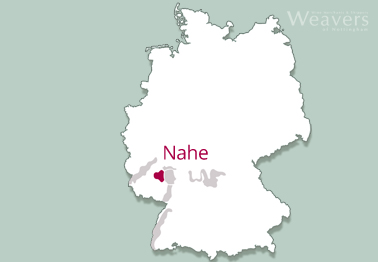
Styles of Wine
Varied is the key word here. Riesling, as usual in Germany, is regarded as producing the best wines in the region and often achieves a high level of acidity that creates structure and ageing potential. The recent trend has been towards a drier style for the quality wines. Sekt, the German sparkling wine, is also produced in the Nahe. A curiosity of the region, practised on a small scale, is the growing of a wide variety of vines in a single vineyard that are then harvested together and blended haphazardly. These wines have no pretensions to high quality, but they do represent an engaging link to the past.
Key Vines
Riesling, Silvaner and Müller-Thurgau, the grape created by crossing the first two, dominate the vineyards of the Nahe. Spätburgunder, the German name for Pinot Noir, makes up most of the minority red plantings.
Climate and Conditions
Soil is the key to the wines of the Nahe. It is extremely varied and, as it is a fundamental factor in the wine produced, this has denied the region a particular style with which to become identified. The sandstone of the upper Nahe will produce very different wines from the slate lower down the river, and the loam near the confluence with the Rhine is considered too fertile to draw the best from the grapes.
